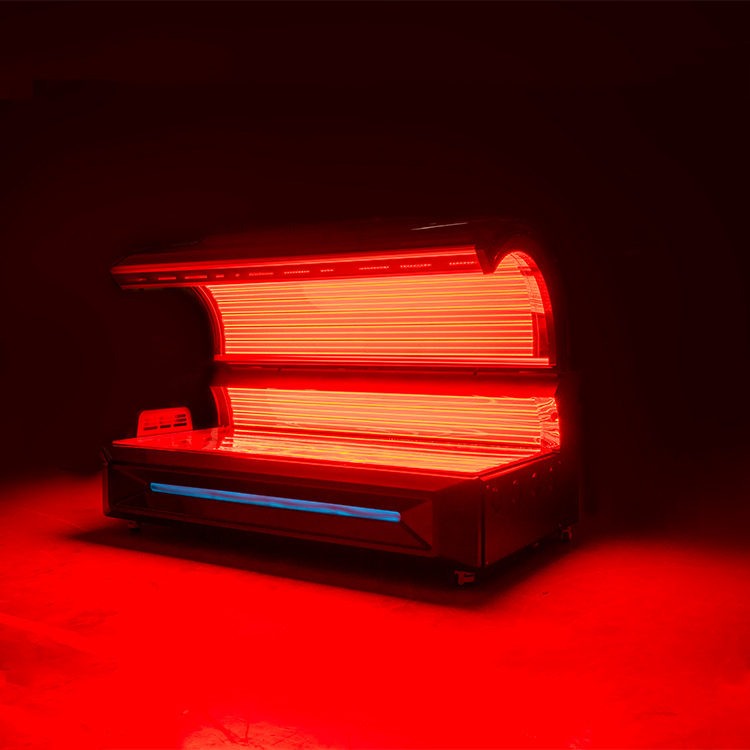Introduction
In the competitive world of sports, athletes are continuously seeking ways to improve their performance and speed up the recovery process after intense training or competitions. While traditional methods like ice baths and massages have been long used for recovery, a revolutionary and scientifically-backed technique is gaining popularity among athletes - red light therapy beds. These advanced devices utilize the power of red and near-infrared light to enhance athletic performance and promote faster recovery, leading many athletes to swear by their effectiveness.
Understanding Red Light Therapy
Red light therapy, also known as photobiomodulation therapy, is a non-invasive treatment that harnesses the healing properties of specific wavelengths of light. These wavelengths, particularly in the red and near-infrared spectrum, penetrate the skin and stimulate cellular processes at the mitochondrial level. The mitochondria, often referred to as the powerhouse of cells, convert the light energy into usable cellular energy called adenosine triphosphate (ATP). This increased ATP production leads to accelerated cellular repair and regeneration, ultimately promoting healing and recovery.
Enhanced Athletic Recovery
One of the primary reasons athletes are turning to red light therapy beds is for their remarkable recovery benefits. After intense training or competitions, athletes often experience muscle soreness, fatigue, and potential injuries. Red light therapy beds can help alleviate these symptoms by reducing inflammation and promoting muscle recovery.
The red and near-infrared light's anti-inflammatory properties can aid in the reduction of post-exercise inflammation, a common cause of delayed-onset muscle soreness (DOMS). By reducing inflammation, athletes can recover faster and get back to their training routines with less downtime.
Additionally, red light therapy beds can improve blood flow and circulation, ensuring that oxygen and nutrients are delivered efficiently to muscle tissues. Enhanced blood circulation accelerates the removal of metabolic waste products, such as lactic acid, helping to prevent muscle cramps and stiffness.
Performance Enhancement
Beyond recovery, red light therapy beds have shown promising results in enhancing athletic performance. By boosting cellular energy production, athletes can experience improved endurance and increased energy levels during training and competitions.
Studies have indicated that red light therapy may increase muscle strength and power, potentially leading to enhanced athletic performance. Athletes who regularly incorporate red light therapy into their training routines have reported improved muscle performance and greater explosiveness during high-intensity exercises.
Furthermore, the therapy's potential to reduce oxidative stress can benefit athletes, as it may help counteract the oxidative damage caused by intense physical activity. By neutralizing free radicals, red light therapy can contribute to overall improved health and well-being.
Injury Prevention
In addition to enhancing recovery and performance, red light therapy beds may aid in injury prevention for athletes. By promoting collagen production, the therapy can strengthen connective tissues and reduce the risk of strains, sprains, and other soft tissue injuries. Furthermore, its ability to support joint health may be beneficial for athletes prone to joint-related issues.
Red light therapy beds can also accelerate wound healing, making them valuable in addressing minor injuries and ensuring a speedy recovery.

Using red light therapy beds is a straightforward and non-invasive process. Athletes can lay comfortably on the bed for a predetermined period, typically between 10 to 20 minutes, depending on the desired treatment area and the specific bed settings. The therapeutic red and near-infrared light penetrates the skin, reaching deep into the muscle tissues to activate the desired cellular response.
Many red light therapy beds offer customized settings, allowing athletes to adjust the intensity and pulsing frequency according to their needs and preferences. Additionally, athletes have the flexibility to incorporate red light therapy into their existing training regimens, making it an easily accessible and effective recovery tool.
The Further of Athletic Recovery
As red light therapy continues to gain recognition for its numerous health benefits, its adoption within the athletic community is expected to grow rapidly. The effectiveness and non-invasive nature of red light therapy beds make them an attractive option for athletes seeking safe and natural methods to enhance their performance and recovery.
Moreover, ongoing research and advancements in technology may unveil even more application for red light therapy in the realm of sports performance and recovery. As we delve deeper into the mechanisms of cellular photobiomodulation, we are likely to uncover additional benefits that can help athletes reach new heights in their athletic endeavors.
Conclusion
Red light therapy beds have emerged as a game-changing recovery and performance-enhancing tool for athletes across various sports. The ability to promote faster recovery, improve performance, and reduce the risk of injuries has positioned red light therapy as a valuable addition to any athlete's training routine.
By harnessing the healing power of red and near-infrared light, athletes can optimize their physical potential and achieve peak performance. As the athletic community continues to embrace the benefits of red light therapy beds, we can expect to witness a new era of athletic recovery and performance excellence. So, whether you're a professional athlete or a fitness enthusiast, consider incorporating red light therapy beds into your training regimen and experience the transformational impact on your athletic journey.
